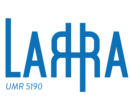Scope note for the class Period – E4 Back
Candidate
Scope note
- Text
This class comprises sets of coherent phenomena or cultural manifestations bounded in time and space.
It is the social or physical coherence of these phenomena that identify an E4 Period and not the associated spatio-temporal bounds. These bounds are a mere approximation of the actual process of growth, spread and retreat. Consequently, different periods can overlap and coexist in time and space, such as when a nomadic culture exists in the same area as a sedentary culture.
Typically this class is used to describe prehistoric or historic periods such as the “Neolithic Period”, the “Ming Dynasty” or the “McCarthy Era”. There are however no assumptions about the scale of the associated phenomena. In particular all events are seen as synthetic processes consisting of coherent phenomena. Therefore E4 Period is a superclass of E5 Event. For example, a modern clinical E67 Birth can be seen as both an atomic E5 Event and as an E4 Period that consists of multiple activities performed by multiple instances of E39 Actor.
There are two different conceptualisations of ‘artistic style’, defined either by physical features or by historical context. For example, “Impressionism” can be viewed as a period lasting from approximately 1870 to 1905 during which paintings with particular characteristics were produced by a group of artists that included (among others) Monet, Renoir, Pissarro, Sisley and Degas. Alternatively, it can be regarded as a style applicable to all paintings sharing the characteristics of the works produced by the Impressionist painters, regardless of historical context. The first interpretation is an E4 Period, and the second defines morphological object types that fall under E55 Type.
Another specific case of an E4 Period is the set of activities and phenomena associated with a settlement, such as the populated period of Nineveh.
- Language
- en




Comments
No comment found.